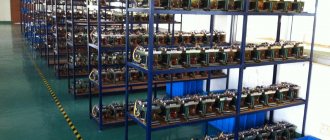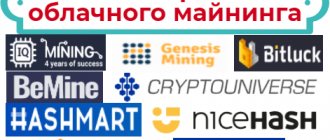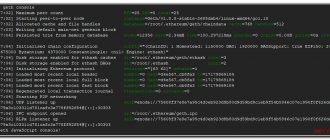The difficulty of mining crypto coins is directly dependent on the settings of the PoW calculation algorithm. The latter, in turn, affects the time it takes to search/solve new blocks. They are also called hashes. The more blocks have already been found, the more complicated the further search process becomes. Based on available statistics over recent years, the difficulty of mining, for example, Bitcoin, Ethereum and ZCash, continues to increase. Mining difficulty is just one of the basic things you need to know to start mining cryptocurrencies.
Mining Litecoin
According to CoinMarketCap, as of January 10, 2020, 63,827,802 LTC were mined. Accordingly, miners can receive another 20,172,198 Litecoin coins.
Litecoin mining program
One of the most popular programs for mining Litecoin is GUIMiner-Scrypt
. It has a fairly simple and intuitive interface, and does not require ultra-precise settings via the command line. Proven programs include CGMiner and Cudaminer, but they are more “sensitive” and suitable for experienced users.
️
Download GUIMiner-Scrypt program
Litecoin mining pools
After installing the miner, you need to select a pool, since it is by combining power with other users that it is more profitable to mine LTC. Solo mining of Litecoin is extremely unprofitable.
When choosing a pool, it is important to decide on the payment system. The most popular among them are PPS and PPLNS
️
It is recommended to choose PPLNS as it is considered more secure.
PPS is determined taking into account the difficulty, and each share costs a certain amount of LTC. In this case, there is a risk of bankruptcy for the pool owner, so a commission of 1 to 3% is usually charged.
One of the most popular pools is P2Pool. Its main difference from others is that any user can join without registering. In this case, the reward is paid immediately after finding a block in accordance with the miner’s share.
Other Litecoin pools that require registration:
- Litecoinpool is one of the oldest and most powerful pools launched by the Litecoin developer;
- Coinotron is a multi-currency mining pool for LTC, ETH, ETC, DASH, FTC, VTC and VIA. Here you can select payment methods: PPS, RBPPS or PPLNS;
- F2Pool is one of the largest mining pools in the world. It has support for three languages and supports several cryptocurrencies: LTC, BTC, ZEC, ETH, ETC, XMR, DCR, DASH and XZC.
️
Read the full article: Mining pool - the most profitable pools
What will happen to Litecoin. Miners' reward has been halved
On Monday, August 5, the reward of Litecoin miners for the mined block was halved. The cryptocurrency halving took place at block 1,680,000, the next one will take place four years later, in August 2023.
The event was noted on his Twitter account by the creator of the cryptocurrency, Charlie Lee. He explained that the reward has now been reduced from 25 LTC to 12.5 LTC.
This development will make it much more difficult for some widely used Litecoin mining devices, such as the Antminer L3+, to generate LTC to offset energy costs, explained BitCluster co-founder Sergey Arestov. He added that if the rate does not rise sharply, then halving the block reward will greatly reduce the payback of devices using the Scrypt algorithm.
“With the high price of electricity, LTC mining may be on the verge of profitability. (5.2 rubles per kWh is no longer profitable). Not every miner can handle paying for electricity with real money and putting aside Litecoin in the hope that it will double. We adhere to the strategy that the mined cryptocurrency must be immediately sold, take the profit and recoup the electricity,” the expert advised.
Vice President of CryptoUniverse Nikita Gribkov suggested that, in general, halving will have a positive effect on miners; coin mining will not stop. Large players, whose electricity has been paid for several months in advance, will continue to work, the expert explained. According to him, home miners will most likely have to switch to mining another cryptocurrency.
“The difficulty of mining will adjust itself. In the first hours after halving, the network difficulty does not drop much, but, on the contrary, gradually increases. In the near future, we will have more modern and productive miners,” Gribkov noted.
You will find more news about cryptocurrencies in our telegram channel RBC-Crypto.
Source
How to earn Litecoin: cryptocurrency mining
4 ways to get cryptocurrency:
- Mining LiteCoin;
- Cloud mining;
- Purchase on the exchange;
- Earnings from taps.
Mining LiteCoin. Litecoin is mined similarly to Bitcoin. Users buy video cards, create or buy mining rigs, connect them to the network and receive income. When mining cryptocurrency, a person rents out the computing power of video cards. Solving one problem (hash) brings the farmer 25 LTC coins.
It is not profitable to mine cryptocurrency on a personal computer with 1 video card. By increasing the computing power by installing 4-6 cards, not only electricity and maintenance will pay off, but also the cards themselves - in 4-6 months.
Cloud mining. Investing in mining companies. Entrepreneurs rent premises like a hangar, set up server racks, install equipment and mine cryptocurrency on an industrial scale.
The investor buys part of the farm's computing power by purchasing a contract offered by the company. Contracts have a limit on capacity, price and final profitability. The profitability of the investment exceeds the banking one, the total income depends on the generosity of the cloud mining service.
Buying on the stock exchange. The easiest way to acquire cryptocurrency is to buy coins on an exchange. Deposit funds into your exchange account in dollars or Bitcoins and buy LiteCoin. Users withdraw purchased coins to a cryptocurrency wallet. The method can bring results, since according to the forecast, Litecoin will grow in 2018.
Earnings from taps. Litecoin faucets allow you to receive a small reward for viewing an advertisement, picture or video. In 2022, there will be more and more faucets with the Litecoin cryptocurrency.
Where and how to buy?
Litecoin is an extremely popular currency, and it is traded on many platforms and exchanges:
- Wex;
- Gdax;
- Bittrex;
- Exmo;
- Kraken;
- Bitfinex;
- and many others.
A list of resources can be found at: https://litecoin.com/ru/services#exchanges.
Figure 4. List of exchanges and exchangers on the official website
You can buy LTC by exchanging it for fiat money through exchangers or by entering a certain amount on the exchange and making an exchange transaction there at the current rate. In the same way, users can withdraw LTC.
How does Litecoin cryptocurrency mining work?
One of the most fundamental and technical differences between them is the procedure for extracting them. Both use a consensus mechanism to check functionality. The proof of work is quite simple to understand. Miners use their computing power to solve extremely complex cryptographic problems and equations. The complexity of new tasks is becoming increasingly higher, since if they are simple, then the miners will get all the Bitcoin coins as quickly as possible. But while solving the problem itself is difficult, checking whether the solution is correct should be simple. This is proof of work in simple words.
BTC uses the SHA-256 hashing algorithm for mining. After the difficulty of mining increased and it no longer made sense to mine coins from a regular computer, it was discovered that it was possible to increase mining power exponentially by forming mining pools using parallel processing. In parallel processing, software instructions are distributed among multiple processors. Thanks to this, the execution time of this program is significantly reduced.
Also, the greater complexity of Bitcoin mining has led to the emergence of specialized application integrated circuits such as ASICs. The only purpose ASICs serve is Bitcoin mining.
Mining, as Satoshi originally envisioned, was supposed to be very democratic. The idea was that anyone could use their laptop and contribute to the system by becoming a miner. However, with the increase in complexity and the advent of ASICs, the average user has no chance against large companies.
On top of everything else, mining is an extremely wasteful process. The amount of electricity lost during mining is enormous. Here's how much energy BTC mining consumes:
Bitcoin consumes 32.73 TW of energy annually! This is almost as much as Denmark consumes, and more than Oman, Morocco and Serbia:
On top of this, the effects that mining can have on the environment are potentially very devastating.
Building on the first point, another important issue is currency centralization. Currently, more than 50% of Bitcoins use only five mining pools. If any pool ever manages to get 51% of the hashrate, then it can launch an attack on the Bitcoin blockchain. Thus, to combat these problems, Litecoin uses the Scrypt algorithm
Changing the difficulty level and its features
It would seem that in the course of technology development, there is a continuous increase in the power and productivity of equipment for currency mining. This means that generation from new blocks could be significantly accelerated. But within the framework of its algorithm, the system is built in such a way that it takes about 2.5 minutes to generate one block. So, in order to prevent it from going beyond a certain time, as the miners' performance increases, the network difficulty increases. Although sometimes this figure may drop.
A striking example is the fire situation in Taiwan, when a large amount of advanced equipment failed. But this phenomenon was short-lived and, most likely, exceptional. What could be the reason for the constant increase in network complexity? In fact, there may be several factors influencing this process.
- As part of the network architecture, there is a special algorithm for recalculating the difficulty after 2016 blocks are generated, therefore, in order to uniformly release cryptocurrency, the system needs to analyze and evaluate the speed of mining activity. Thanks to this scheme, the emission is uniform and of high quality.
- Based on the network complexity indicator, the amount of reward for correct decisions changes, and sometimes this surprises miners: after all, with the same number of decisions, the reward is different each time, while the rate remains unchanged. Thus, to generate each block, about 3,000,000 solutions are required, but there is a possibility of changing the value of this parameter. In such market conditions, full nodes are faced with a dilemma when an identical number of solutions can receive different amounts of LTC.
Formula
This carefully thought-out structure involves regulating and maintaining key process parameters. This is how the difficulty of mining Litecoins is determined.
New LTC coins on CPU processor
Although Litecoin mining using a PC has been unprofitable for at least five years, search queries on this topic continue. Why is it so clear? Everyone wants to make money, but not everyone has a few thousand dollars for a more or less serious farm. Let's see if there is a chance to get the coveted “silver” on your computer and laptop.
Let's operate with facts. Any litecoin mining calculator uses two values to determine the likely time to find a new block, which is the goal of the entire process: the current network complexity and the equipment speed, expressed in hashrates (the number of options checked per second).
Read more about how to use mining calculators here.
Let’s say the result right away - even without taking into account the cost of electricity and other overhead costs, the period of a block’s presence is calculated in years and is more like a lottery than a business.
Beginners may be immediately upset, but there is no need to become depressed because they cannot buy everything at once. You can increase your turnover gradually, and at the first stage you can try mining litecoins through a wallet that has a similar function.
Let's put together an initial configuration from freely available components; names and manufacturers may differ, but the general principle remains the same:
We will supplement the motherboard with video cards in the next section; a multi-core processor in combination with a large amount of memory allows you to combine litecoin mining on the processor with other currencies that require a large amount of RAM, for example, Monero. Install the official Litecoin Core wallet, launch and enable the “Mining” function.
If you don’t want to set up the equipment yourself and your budget allows, then the fastest way to start mining the Litecoin cryptocurrency is to purchase a specialized ASIC device.
The speed will be at the level of the most powerful video cards with less heat generation and simple settings, but there is a problem. ASIC can only mine Litecoin and nothing else.
Disadvantages of LTC[edit]
Doubtful silver in relation to gold
Many people disagree with Litecoin's "silver" status compared to Bitcoin's "gold" status, since Bitcoin itself represents both gold and silver. Looking at the long term, a unit of BTC may acquire a value too high for everyday use ("gold"), but there will be smaller units that can act as "silver" by being naturally/automatically convertible into Bitcoin.
Vulnerability due to mining monopoly
Similar to Bitcoin, Litecoin can be attacked by an entity capable of obtaining a rate equal to or greater than the network hash rate. These actions are called “51% attacks”, but they are becoming increasingly difficult to launch and maintain due to the general and constant increase in the rate of network hashing. While this argument postulates that Litecoin is designed to be ineffective on all standard computer components (including GPU and CPU), this results in a malicious individual needing to produce a small package of specialized/off-the-shelf hardware in order to take over and integrate all mining systems.
Memory bandwidthsedit
Many people try to refute this by arguing that scrypt is not inefficient, but is in fact designed to be highly dependent on memory transparency. Since the high-speed cache installed on modern processors already fills most of the dead zone, no significant improvement can be achieved by producing standard chips. Taking all of the above as an axiom, it is possible to estimate the cost of an attack using GPUs that are currently available to users.
To do the calculation, let's take the hardware unit price to be $400 per megahash per second (speed as of October 2013). In turn, the hash rate on the Litecoin network is 30 gigahash per second. The total number of pieces of equipment required to reach and take over the Litecoin network with a 51% attack is 45,000 AMD HD 7950. The monetary equivalent is $12 million.
“Pump and drop” scheme edit
It is believed that one or more of the facts previously mentioned in this article indicate the failure of Litecoin and the lack of long-term development potential. This means that the scheme with a simple and understandable name - “pump and roll” - works effectively. According to this principle, those who started mining and participating in the system earlier are rewarded at the expense of those who joined the race just before the end of the process (they are the ones who end up with nothing and lose all their invested funds).
Often people complain that the Litecoin community distorts reality by portraying "faster block times" as the reason for fast transactions. In addition, Litecoin supporters describe the scrypt algorithm as supposedly resistant to ASIC or FPGA hardware. It is believed that this is done in order to show the audience that Litecoin has a certain value and to artificially inflate it.
It is important to note that, in general, such critics do not think that Litecoin/blockchain-based currencies are inherently already “pump and bust” schemes. Most likely, Bitcoin's existing network effect, coupled with the lack of significant differences between the two currencies, and the use of a proof-of-work algorithm will lead to the foregone end of Litecoin.
Based on this argument, Bitcoin does not have these “flaws” and therefore does not fall into the category of “pump and bust” schemes.
LiteCoin Growth History
2012 – gradual increase from 2 to 7.5 cents.
2013 – a smooth increase to 4 cents, followed by an expansion of the bubble in November. The rate rose to $40.61. The year closed at $23.51.
2014 – a long downward trend that began on January 1. The price dropped from $23.51 to $2.7 per coin over the course of the year.
2015 – finding quotes in a narrow price range. The maximum price level is 7.3 $/LTC.
2016 – the Litecoin rate invariably fluctuates around the price level of $3.5.
2017 – aggressive growth and enormous investor interest provoked a rise in prices to the historical level of 80.32USD.
2018 – in January there was a decrease, followed by a partial recovery in February.
Litecoin to dollar rate:
Litecoin to ruble exchange rate according to the BTC-e exchange:
Important events
Table 1. Key milestones in the history of the currency
| 2011 |
|
| year 2013 |
|
| 2017 |
|
The graph below shows the dynamics of the cost:
Figure 3. General graph of LTC cost
The market capitalization of the cryptocurrency at the end of December exceeds 13 billion USD; for one coin they give about 250 USD.
Using LiteCoin cryptocurrency
The Litecoin cryptocurrency is used for storing funds, private transfers, and paying for goods and services. The system is not regulated, so by buying cryptocurrency, the user evades paying taxes.
Exchange games for Litecoin on the new financial markets of cryptocurrencies attract speculators. Traders want to make money on Latcoin surges. Several times since the existence of LiteCoin, the value of the coin has skyrocketed. Enterprising people buy cryptocurrencies at low prices and sell at high prices. Most often, Litecoins are exchanged for Bitcoins. The growth of Bitcoin provides double speculative income - from the growth of Litecoin and the increase in the value of Bitcoin.
The anonymity of Litecoin ensures the protection of personal data and funds for network participants. It is convenient to accept deposits, advances and bonuses on crypto wallets, so as not to appear before the tax authorities.
Wallets
There are wallets for all popular platforms to store Litecoin. You can download the official wallet at the address, there is also a description of the installation for each platform: https://litecoin.com/ru/#wallets.
You can also store funds in the LiteVault online wallet: https://www.litevault.net/. The wallet service promises security of stored funds and ease of use.
Figure 5. Litevault greeting
After downloading and installing the wallet on your PC, you will need to synchronize it with the general network, which will take some time.
Why is Litecoin so much more attractive for investment than Bitcoin?
Upon careful analysis of these factors, you will notice that many of them are primarily related to Bitcoin. The first cryptocurrency currently accounts for 42% of the total market capitalization; In addition, Bitcoin ranks first in terms of average daily dollar trading volume
All this naturally attracts the attention of investors to it.
However, this alone does not make it the best cryptocurrency to invest in. It is quite possible that a much wiser choice for potential investors would be Litecoin, which emerged as a result back in October 2011.
As you can easily see, Bitcoin and Litecoin are indeed similar in many ways. Both cryptocurrencies are positioned as peer-to-peer payment platforms; both limit the maximum number of tokens (21 million for Bitcoin and 84 million for Litecoin). However, there are five reasons why Litecoin may be a safer investment in the long run.
Charlie Lee devoted himself entirely to Litecoin
Charlie Lee, who created Litecoin while working at Google back in 2011, worked for many years at the cryptocurrency exchange Coinbase, but announced his resignation last June to devote his time to Litecoin development. The presence of a public figure of the founder and his commitment to the project gives Litecoin a clear advantage over Bitcoin.
Litecoin implements SegWit update
Another difference between the cryptocurrencies - and one of the main reasons that prompted Lee to leave his post as director of development at Coinbase - was the completion of the transition to the Segregated Witness (SegWit) protocol in May. In this regard, Litecoin has significantly outperformed Bitcoin, significantly increasing the throughput of its blockchain, reducing transaction processing time and reducing costs.
Considering that a significant portion of the criticism of Bitcoin is related to the cost and time of transactions, Litecoin has an advantage here too.
More decentralized Proof-of-Work algorithm
Additionally, Litecoin takes a completely different approach with its Proof-of-Work algorithm, the process of verifying transactions on the network by solving complex computational problems.
This helps attract more miners and ensures that no one can crush the entire Litecoin mining market, as has already happened with Bitcoin. In short, it is an even more decentralized network than Bitcoin.
Faster block processing speed
As follows from the previous paragraph, the Litecoin network processes much faster than Bitcoin. A block in the Litecoin system is processed every 2.5 minutes, while in the case of Bitcoin the same process takes about 10 minutes. This speed boost allows Litecoin to process more transactions—and do it much faster.
Law of Large Numbers
Finally, investors can take advantage of the law of large numbers. It is much easier to imagine Litecoin doubling its value: in its case, this would require growth from $15 billion to $30 billion, while Bitcoin would have to grow from $236 billion to $472 billion to achieve the same result. Investors are actively looking for the “next Bitcoin,” and many have already found it in Litecoin.
Prospects for Litecoin and expert forecasts
The Litecoin cryptocurrency has high prospects for further growth in value. A number of factors contribute to this:
- developers are actively introducing innovations - SegWit, Lighting Network;
- The company’s marketers enter into partnership agreements that expand the scope of application of the coin and contribute to the popularization of the cryptocurrency;
- relatively low total capitalization - to double the value of a coin, an investment of $8 billion is sufficient.
Technical analysis of the Litecoin chart and forecasts of many experts suggest a constant increase in the value of this cryptocurrency in the coming years. However, it is necessary to remember that any investment in digital coins involves the risk of losing funds.
Why is the difficulty of LTC mining increasing?
Considering the fact that cryptocurrency mining is a business with a high level of profitability, high-tech equipment is used for this work, which is constantly being improved. The Litecoin crypt is based on the Scrypt algorithm, for which special ASIC devices have been developed, which are chips that are “sharpened” to perform a single task - calculating hashes of cryptocurrency blocks. It is no longer profitable to mine LTC on processors and video cards.
To avoid currency depreciation and maintain the system’s block generation frequency of 2.5 minutes, it is necessary to compensate for the increase in computing power by increasing the difficulty of coin mining. This decision regulates a number of processes:
- Emissions are controlled. If the complexity of the Litecoin network had not increased, then all 84 million coins would have been mined much faster than planned by the program, that is, the cryptocurrency’s potential would have been exhausted much faster.
- The volume of cryptocurrencies is being optimized. An oversupply of an asset on the market inevitably affects its value. A scarce asset is worth more and is less susceptible to depreciation processes.
- The price is indirectly regulated. Most often, a popular coin, the difficulty of mining which is higher, is valued more expensive than a similar crypt that can be “mined” without much effort. That is, more complicated mining is a prerequisite for increasing the value of a digital asset.
Litecoin difficulty is recalculated after finding every 2016 blocks, that is, taking into account the built-in speed of their generation, twice a week. It happens like this:
- the previous complexity is calculated, that is, the amount of time that was actually spent on calculating 2016 blocks;
- the new difficulty should allow for an estimated time of 2.5 minutes per block, i.e. 5040 minutes.
Further, according to the formula, the previous difficulty is multiplied by 5040 minutes, and the product of these indicators is divided by the actual time spent searching for the previous 2016 blocks. If we translate into time indicators, then the difficulty of Litecoin mining is recalculated twice a week, that is, much more often than the Bitcoin network. This allows you to react more flexibly to the dynamics of the overall network hashrate and “keep a leash” on the rhythm of emission.
Detailed data on the main digital currencies, including LTC, can be found on the resource bitinfocharts.com.
How has the difficulty indicator changed since the cryptocurrency was released?
To understand how the cryptocurrency has developed, you can look at changes in the difficulty of mining Litecoin. The dynamics over the entire existence of the crypt indicate that rapid growth began only in mid-2022, that is, with a surge of general interest in digital currencies in general.
But even before that, interesting processes took place. Let's briefly go through the main milestones:
- At the start of sales on October 8, 2011, the difficulty was at 0.0002, but as the number of “miners” increased, it increased and already crossed the 1 hash mark on January 3, 2012.
- A year later, the indicator reached 34.32 and the mining difficulty graph went down. This situation was explained by the fact that there was not enough computing power to maintain the prescribed block mining frequency (every 2.5 minutes). The decline ended on March 1, 2013 at 15.82, after which the difficulty changed mostly upward.
- The 1 thousand hashes milestone was passed on September 2, 2013, after which several years were marked by fluctuations in the curve, although the general direction still showed growth. This was largely due to exchange rate fluctuations of the coin and, consequently, the influx or outflow of “miners”.
- On February 3, 2022, the difficulty indicator exceeded 100 thousand. The coin steadily grew in price, miners en masse switched to ASIC devices from video cards, sharply increasing the hashrate. As a result, the rate at which the difficulty grew grew faster and faster.
- Already on October 17, 2022, the figure reached the milestone of one million hashes against the backdrop of rising coin quotations.
To better understand crypto development trends, just look at the chart over the past year.
As we can see, a sharp increase in the indicator continued from December 2017 to May 2022 inclusive (the record was 11.3 million on May 26, 2022). And this despite the fact that after passing the peak value on December 19, 2017 (351.5 USD per coin), a long-term correction began, and the price gradually decreased during this period to $130 per unit. In many ways, the reason was the release by manufacturers of new ASIC models with high performance. Thus, the Litecoin Scrypter PRO device dug at a speed of 900 Mh/s, and the Wolf ASIC was even more – 1 Gh/s.
Over the summer, the difficulty of the Litecoin network decreased slightly due to the price of the coin falling below $100 per unit. But in the second half of July the graph slowly went up. A new ASIC LTCMaster Innosilicon A6 at 1.23 Gh/s was launched on the market. As soon as positive dynamics in the value of “digital silver” appear, we should again expect an influx of people willing to “dig” LTC, an increase in the hashrate and a corresponding increase in the difficulty of mining the coin.
Methods for changing complexity as the network develops
Correction can be made in two ways:
Through a fixed number of blocks, for example in Bitcoin and Litecoin this happens after every 2016 blocks. In this case, the new value is selected in such a way that the search time for a new hash remains unchanged.
Recalculation occurs individually for each farm or pool, so each mining node has different current values. The cryptocurrency mining difficulty graph shows only the average range.
The total power of the mining network in hashrates (H/s) is taken into account. An increase in H/s means that additional participants have joined the mining and the difficulty needs to be increased. H/s drops - the block search time has increased and the difficulty has decreased.
This approach, unlike the previous one, is less fair for small farms, because adding more computing power increases the level for everyone.
When all coins are obtained during the creation of a currency (pre-mining), such as Ripple, the concept of “mining difficulty” becomes meaningless, and such a graph cannot exist.
Select the miner program
The management of the computing power of mining equipment is given to special programs - miners.
There are a large number of them on the market and without help it is quite difficult to understand the assortment.
The following software is recommended for Litecoin mining:
- GUIminer;
- Minerd;
- 50Miner.
This software is pre-configured to work with CPU and GPU computing.
When choosing a specific miner, read the operating instructions and settings for the selected equipment.
For ASIC miners, specialized software is not required, except in cases where the power reaches an industrial scale and unique software must be written to maximize production.
In a situation where the hashrate of 1000 ASIC miners increases by 1 Mh/s, development costs will be justified.
In other cases, the software preinstalled in the equipment itself is sufficient.
go
viaBTC
As the name suggests, viaBTC is a multi-cryptocurrency mining pool that began operations as a Bitcoin pool back in June 2016. It currently includes mining pools for Bitcoin, Bitcoin Cash, Ethereum, Ethereum Classic, Dash, Zcash and Litecoin, making it one of the most versatile mining pools in the world.
Like LitecoinPool, viaBTC offers its users a pay-per-share (PPS) method. One of the main advantages of this pool is the fact that it offers cloud mining, making the process accessible even to those users who cannot afford the once expensive mining equipment.
Miners are required to pay a small service fee of 4% for stake payments and 2% for PPLNS payments. Even though viaBTC is not “completely free”, it is still a good option for mining Litecoin as the service pays out 800 DOGE for every LTC mined.
The phenomenon of cryptocurrency mining difficulty
The term complexity of generating a given network includes a measurement unit that reflects the difficulty in finding the required key. Of course, an uninitiated person is unlikely to understand anything from this definition, so we should consider the principle of this scheme in more detail and in order. The essence of working on the Litecoin network is cyclic hashing. So, the hash is read from the block header, and after that it is compared with the indicator that was stated earlier. If the miner receives a value less than the value of the set goal, then the system counts the block. If this condition is not met, the header is subject to changes, and the hash is subject to a new recalculation.
Difficulty chart (using Bitcoin as an example)
As soon as a certain set of conditions are met on the part of the miner, the block is transferred to network nodes in order to eliminate the possibility of errors. In the future, each unit acts as an element - a link in the chain; in this case, the hash is included in the next block. As the level of difficulty increases, there is a need to improve the performance of devices used for mining activities.
Based on the above description, it can be noted that the complexity of the Litecoin network is a unit of measurement that reflects the difficulty of finding a corresponding hash that satisfies a given condition. It is this parameter that is subject to increasing complexity every year and determines the need to increase the computing power of the equipment that is used for its mining.
The essence of the complexity of mining activity
Mining difficulty as a separate parameter is used to change the difficulty of determining a hash. The last unit is of particular importance not only within the digital asset in question, but also for all cryptocurrencies in general. Cyclic hashing involves the creation of new coins by forming new block elements. This involves transfers within the system, consisting of two elements:
- Header, previous block and encrypted information about transactions that are carried out.
- List of financial transfers within the system that have received a sufficient number of confirmations.
Mining itself is a unity of complex mathematical calculations that are carried out within a certain scheme:
- identifying the hash from the block header and its subsequent comparison with the indicator from the previous structural unit;
- the value should be a smaller value; only in this situation will the system recognize the legitimacy of the block.
The Litecoin difficulty graph will allow you to determine this indicator without any problems and draw certain conclusions in this regard. Thus, complexity and its indicator are determined by several key parameters and principles that must be taken into account. They should be taken into account first, because the subsequent development of the currency direction depends on this.











